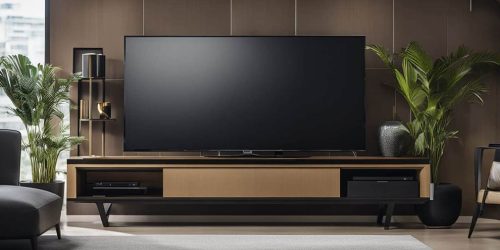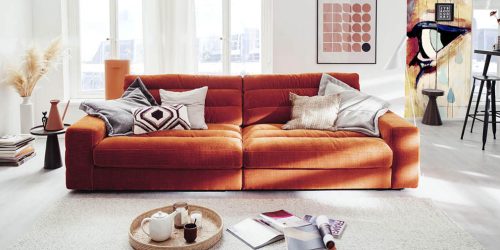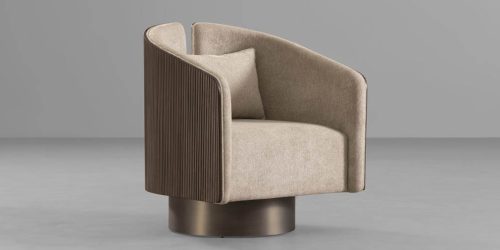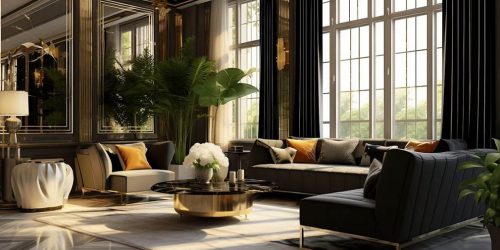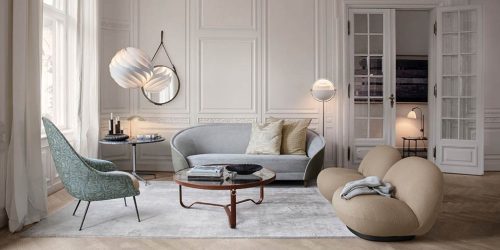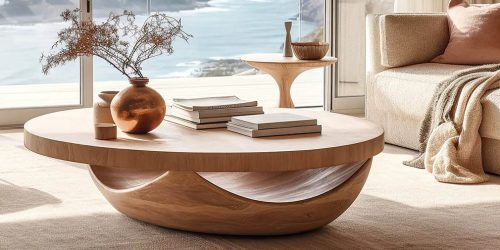The Golden Rules of Living Room Design: Balancing Comfort and Aesthetics
When it comes to designing a living room, one of the most important considerations is finding the right balance between comfort and aesthetics. After all, the living room is not only the heart of the home where families gather and relax, but also a space that represents your personal style and taste. Achieving a harmonious blend of comfort and visual appeal can be a challenging yet rewarding task. We’ll explore the golden rules of living room design that ensure your space is both comfortable and aesthetically pleasing.
1. Create a Layout that Promotes Conversation and Flow
A well-designed living room layout should prioritize comfort and functionality, enabling easy movement and facilitating conversation. Start by positioning the key furniture pieces — the sofa, chairs, and coffee table — in a way that encourages natural interaction. The ideal seating arrangement forms a U-shape or circular arrangement, with enough space between seats to allow for easy movement without overcrowding.
Ensure there is adequate space for people to walk around comfortably. Avoid blocking paths with large furniture pieces or creating awkward corners. The layout should feel open and inviting, while still allowing for intimate conversations and gatherings.
Tip: Aim for a minimum of 18 inches between the coffee table and seating. This allows people to reach items comfortably without feeling cramped.
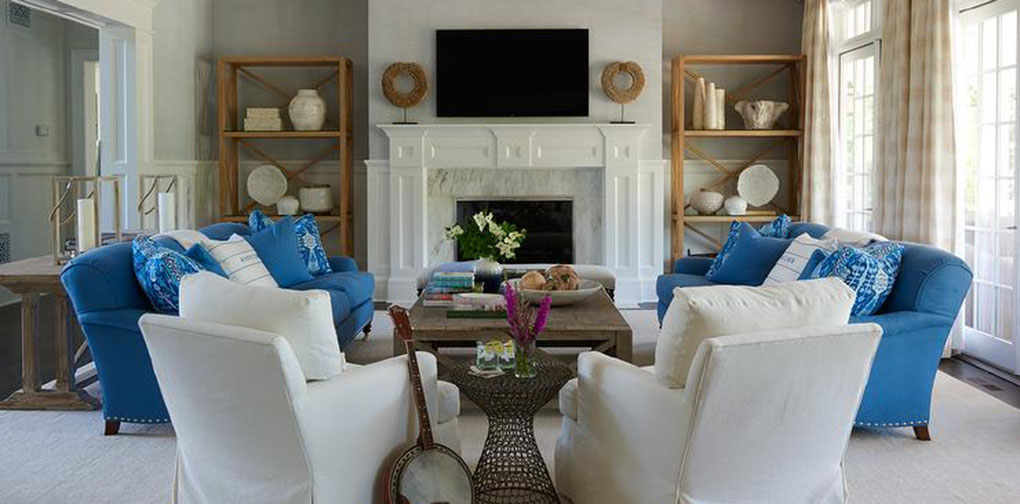
2. Invest in Comfortable, High-Quality Furniture
Furniture is the backbone of your living room. It’s the main element that dictates comfort. While it’s tempting to focus solely on the visual appeal of your furniture, always prioritize comfort first. A stylish piece is of little use if it’s uncomfortable to sit on or impractical for everyday use.
When selecting a sofa, choose one with cushions that provide adequate support for the back and arms. High-quality upholstery materials like velvet, leather, or linen not only add visual elegance but are also more durable. Opt for pieces that are ergonomically designed to ensure long-term comfort.
Tip: A sectional sofa is perfect for larger spaces, offering ample seating and creating a cozy environment. If space is limited, consider a sleek, modern sofa with additional throw pillows to enhance comfort.
3. Blend Aesthetic Appeal with Practicality
While aesthetics are important in creating a visually pleasing environment, practicality should never be overlooked. Your living room should be a space where you can both entertain guests and unwind in comfort. This balance can be achieved by incorporating multi-functional furniture and accessories.
For instance, a coffee table that doubles as a storage unit or a modular sofa that can be rearranged to suit different needs offers both beauty and practicality. Choose pieces that not only enhance the room’s aesthetic but also serve a functional purpose, like storage, additional seating, or lighting.
Tip: Use decorative baskets or trays to keep remotes, magazines, and other small items organized. These elements can add texture and style while maintaining order.
4. Use a Balanced Color Palette
Colors have a profound impact on both the comfort and aesthetics of a room. A cohesive color palette helps to create a sense of harmony and tranquility, while clashing colors can lead to a chaotic or uncomfortable atmosphere.
For a cozy and inviting living room, opt for soft, neutral tones like beige, taupe, or light gray as your base. These shades act as a calming backdrop and allow other colors to shine. Accent these neutrals with pops of bolder hues, such as deep navy, emerald green, or rich mustard, to add personality and visual interest.
Tip: Incorporate textures through textiles like throw blankets, rugs, and pillows in varying colors to create depth and warmth without overwhelming the space.
5. Incorporate Textures for Depth and Warmth
A room filled with only smooth surfaces and uniform materials can feel cold and uninspiring. To create a living room that is both aesthetically appealing and comfortable, incorporate a variety of textures. Mixing materials like wood, metal, fabric, and stone will add depth and warmth to the space.
For example, a plush velvet throw on a leather sofa provides a tactile contrast that makes the space feel more inviting. A woven wool rug on a hardwood floor can add softness underfoot, making the room feel cozier. Mixing and matching textures helps to create a dynamic environment that appeals to the senses.
Tip: Consider using textured wallpaper or wall paneling as a statement element. This can elevate the space without overwhelming it.
6. Layer Your Lighting for Mood and Functionality
Lighting is one of the most important aspects of any living room design, as it sets the tone and atmosphere of the room. A well-lit room feels welcoming and comfortable, while poor lighting can make a space feel dark and uninviting.
To achieve both beauty and comfort, incorporate multiple layers of lighting. Start with overhead lighting, such as a chandelier or pendant light, for general illumination. Then, add task lighting, like table lamps or floor lamps, near seating areas for reading or conversation. Finally, accent lighting, like sconces or wall-mounted fixtures, can highlight artwork, architectural details, or plants, creating a warm and inviting ambiance.
Tip: Use dimmable lights to adjust the mood depending on the time of day or the activity. This allows you to create a cozy, intimate setting in the evening and brighter, more functional lighting during the day.
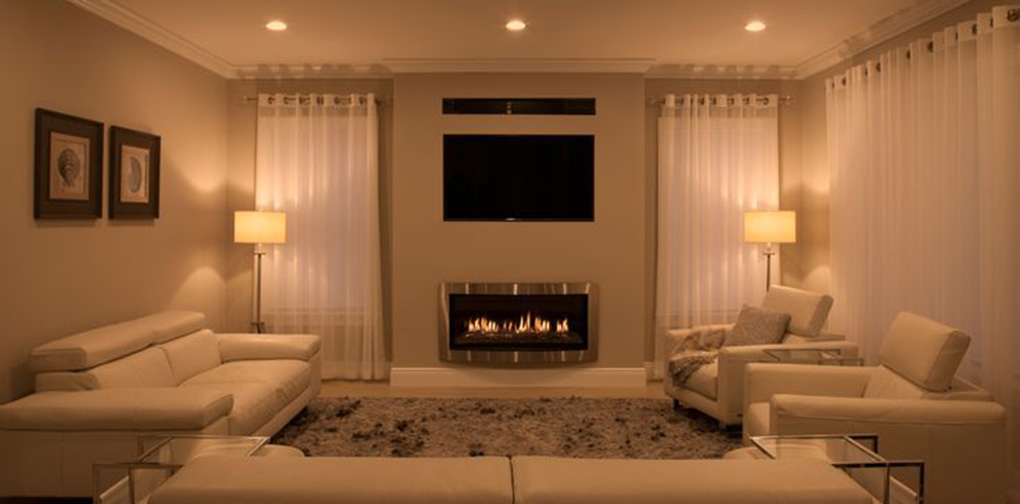
7. Incorporate Personal Touches and Artwork
To make your living room truly feel like home, don’t forget to include personal touches and meaningful artwork. A room that’s full of generic, mass-produced items will lack warmth and personality. Display pieces that resonate with you — family photos, travel souvenirs, or artwork that speaks to your tastes.
Artwork is an excellent way to inject color, texture, and personality into a space. Whether it’s a large statement piece above the sofa or a series of smaller works on a gallery wall, the artwork should complement the overall color scheme and style of the room.
Tip: Mix different types of art, such as paintings, prints, or sculptures, to create visual interest. Don’t be afraid to experiment with eclectic or unexpected pieces, as long as they reflect your personal style.
8. Bring Nature Indoors
Plants are an easy and effective way to bring both comfort and beauty into your living room. Not only do they purify the air and improve indoor humidity, but they also add a natural element that softens the space. Whether it’s a large fiddle leaf fig in the corner or a series of small succulents on the coffee table, plants introduce a sense of calm and vitality.
Tip: Choose plants that suit your living room’s lighting conditions. Low-light plants like snake plants or pothos are ideal for areas with limited natural light, while sun-loving varieties like succulents thrive in brighter spaces.
Designing a living room that marries comfort with aesthetics may seem like a daunting task, but it doesn’t have to be. By following these golden rules, you can create a space that not only looks beautiful but also feels inviting and functional. Whether you’re entertaining guests or relaxing with your family, the living room should be a place where you can enjoy both style and comfort in equal measure.
Remember, good design doesn’t just make a space look great; it enhances how you feel in that space. So, focus on creating an environment that makes you feel at ease and reflects your personality. In the end, that’s the true beauty of great design.
